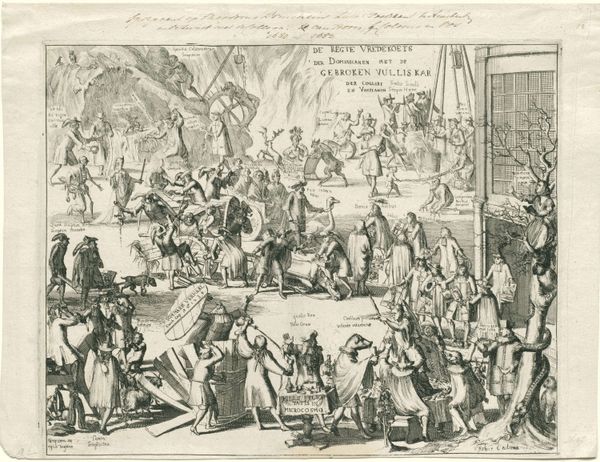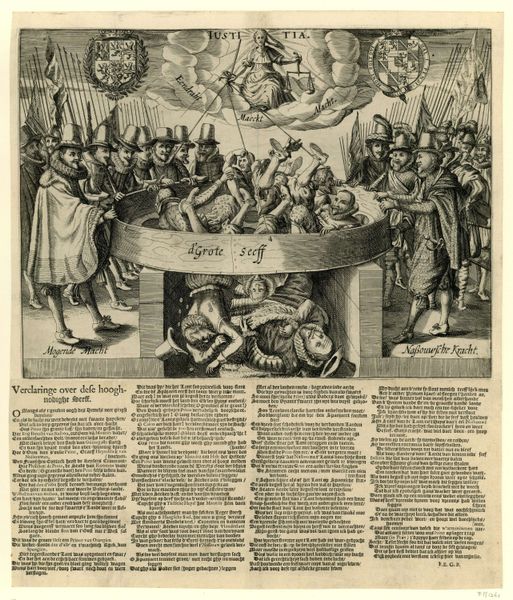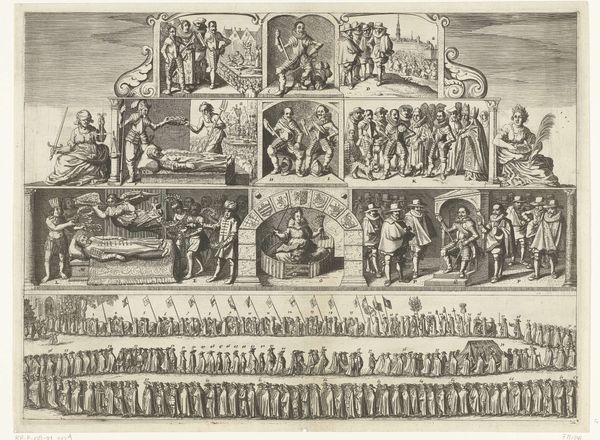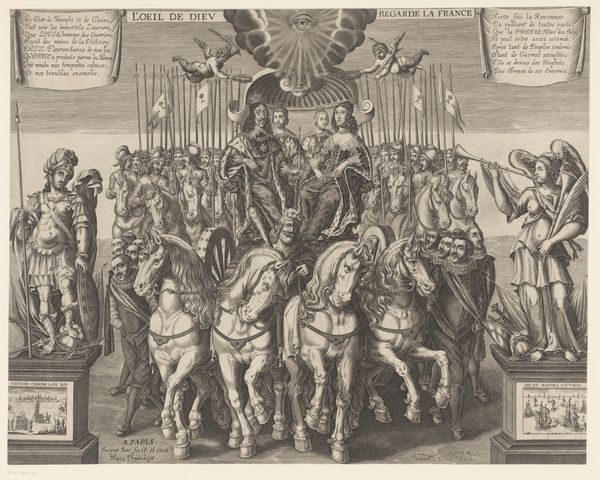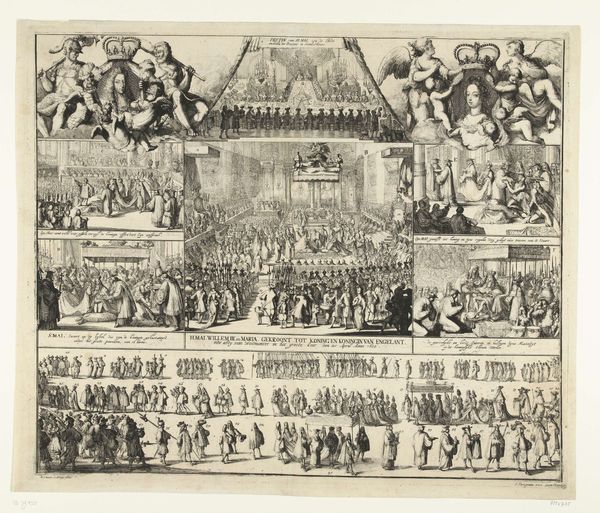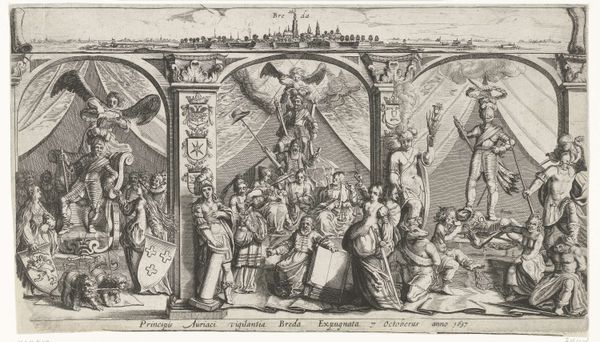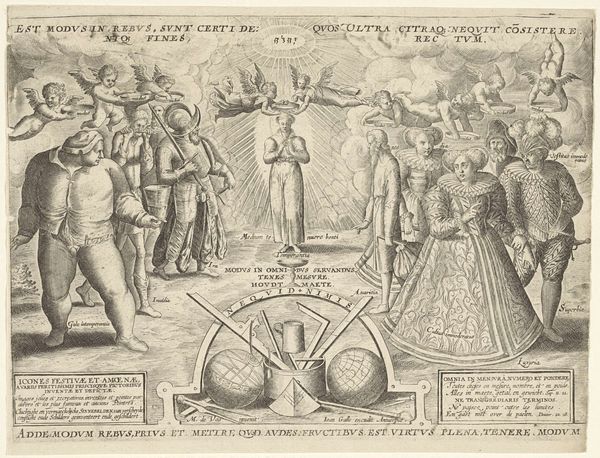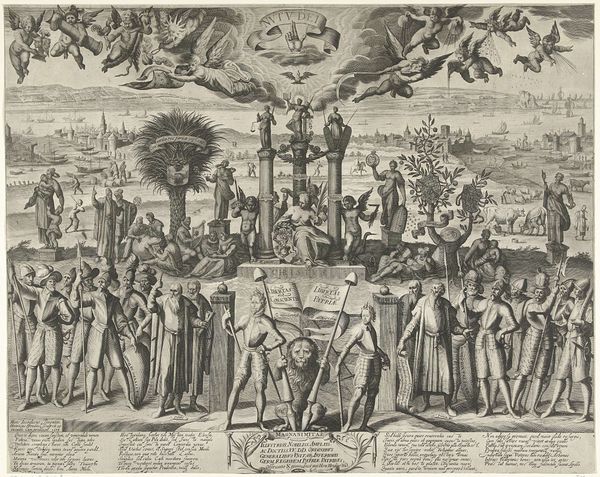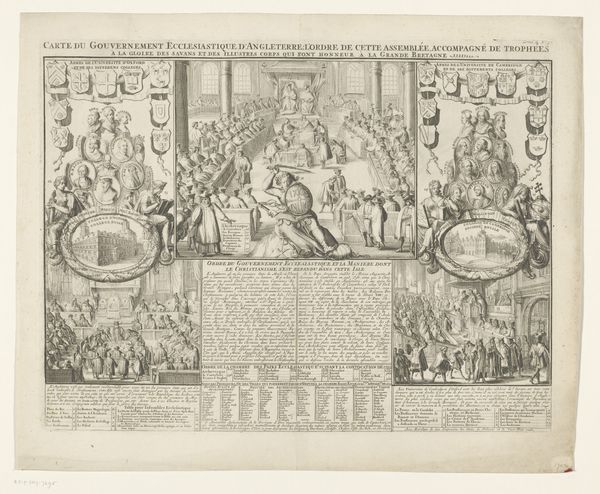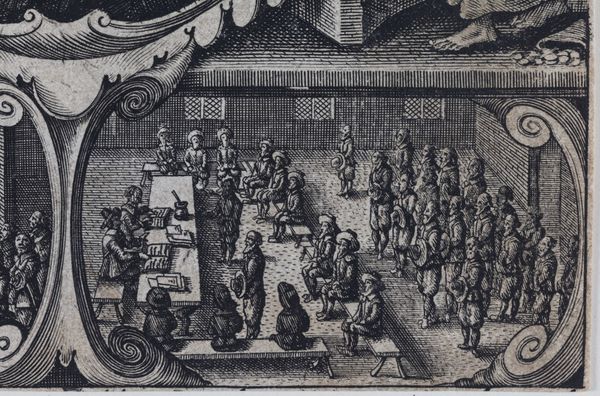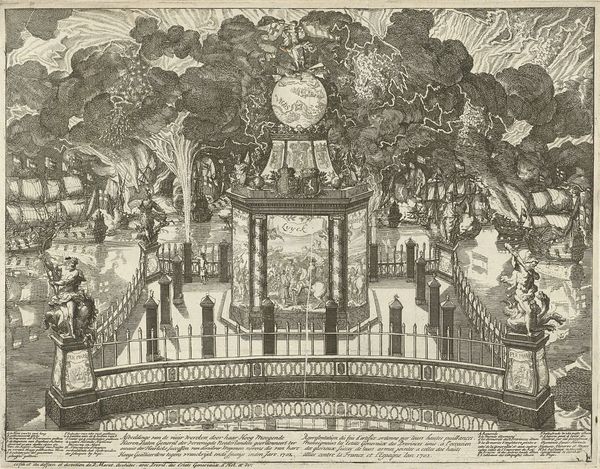
print, engraving
#
portrait
#
allegory
#
baroque
# print
#
figuration
#
line
#
cityscape
#
history-painting
#
northern-renaissance
#
engraving
Dimensions: height 345 mm, width 412 mm
Copyright: Rijks Museum: Open Domain
Curator: This engraving, "Monument voor de vrede in de Nederlanden, 1609," is attributed to an anonymous artist. Created in 1609, it offers an allegorical representation printed on laid paper using the line and engraving techniques. Editor: Immediately striking is its composition. A tiered, almost theatrical stage populated by allegorical female figures under two cityscapes. The somber monochrome lends it a weighty gravitas. Curator: The structural clarity here is quite compelling. The hierarchy, established through the vertical arrangement of figures and the centrality of Belgica enthroned, effectively communicates power. The architectural setting, coupled with the precise linework of the engraving, underscores a desire for order. Editor: Yes, Belgica is at the center, above the cities of Antwerp and Amsterdam in the backdrop, literally supported by the other figures holding regional shields. Yet this “peace” hides a subtle propaganda; a projection of power after a period of conflict, conveniently arranged under a female figure who has taken a new, powerful role, it gives a sense that the peace only applies to those “cities” being watched over, potentially ignoring those in other lands during this peace, almost setting them up for the opposite if they dared rebel. Curator: I appreciate that contextual reading. Considering the line as an element, note the cross-hatching that delivers tonal range, differentiating textures, in each figure’s face, dress, and gesture. Note how Belgica contrasts so well as she looks at those that will “behave.” Each visual element seems carefully considered. Editor: And this “careful consideration,” as you put it, needs scrutiny. We can see how female figures symbolize the different Dutch regions after the Twelve Years’ Truce, this isn't an abstract depiction of peace, is a representation of very specific geo-political interests—and potential power struggle. There is always violence lingering beneath a “peace treaty.” The engraver had no other objective. Curator: I concede the artwork operates beyond the purely aesthetic, clearly carrying socio-political undertones, but ultimately this adds a critical lens to examine and analyze it further. Editor: Indeed. A useful reminder of how power likes to imagine itself: serene, ordered, divinely sanctioned; with hidden dangers in every line.
Comments
No comments
Be the first to comment and join the conversation on the ultimate creative platform.
